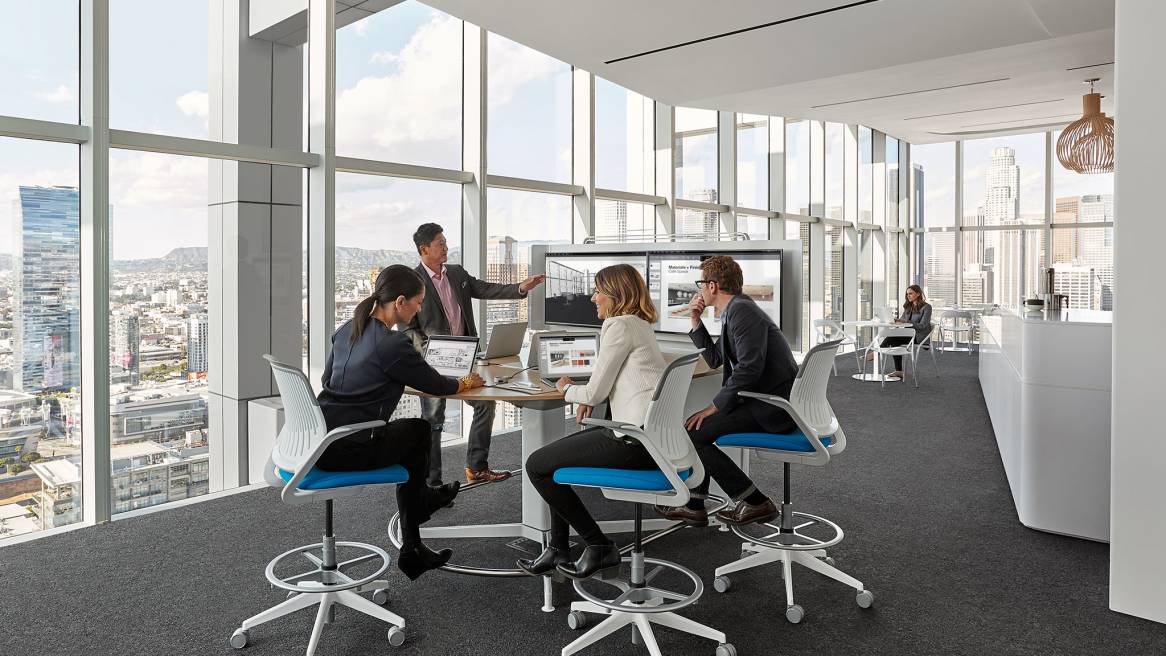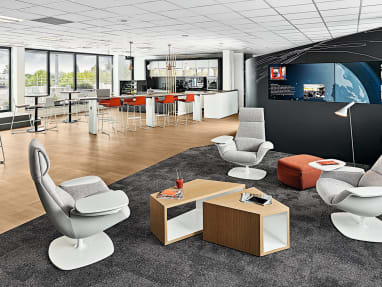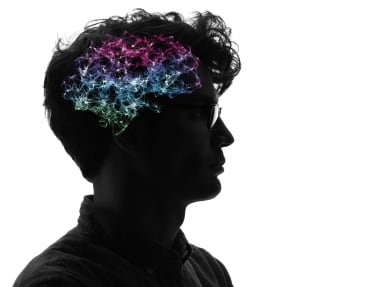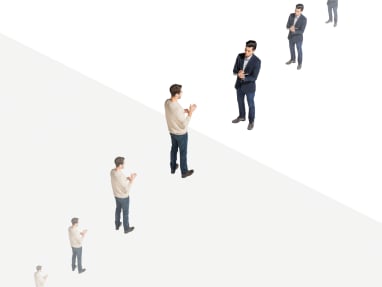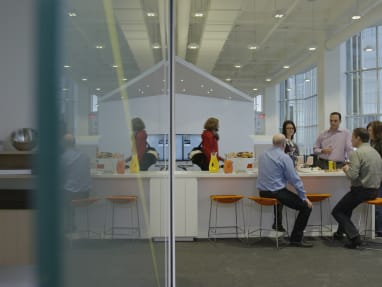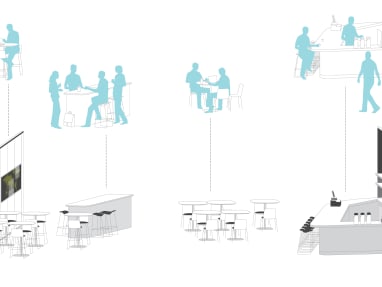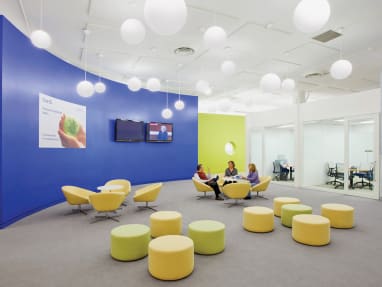Insights + Solutions Guide
The Insights and Solutions guide offers ideas and design solutions to create a Resilient Workplace that helps boost employee engagement.
Key Design Principles
Overview
Overview
How the Physical Environment Can Help
A Resilient Workplace is an ecosystem of workspaces designed to adapt and evolve over time, optimizing real estate while fostering higher levels of employee engagement. The result is a more engaged and effective workforce that allows the organization to respond to changing business conditions.
Through ongoing research and exploration via behavioral prototypes, Steelcase has uncovered two key design principles that can help organizations create resilient and cost-effective workplaces that address the issue of employee engagement.
These two design principles are:
1. Design for Wellbeing: Designing workplaces to support the holistic wellbeing of people can amplify employee engagement and satisfaction
2. Ecosystem of Spaces: A workplace ecosystem supports employee wellbeing by providing individuals and groups with a range of options within the workplace.
Design for Wellbeing
Design for Wellbeing
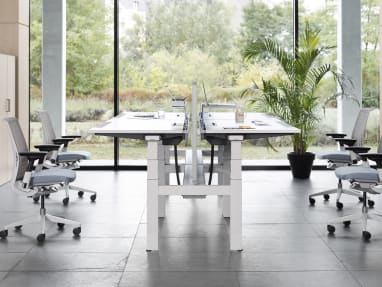 Open image tooltip
Open image tooltip Physical
Be healthier
Workpspaces should support movement throughout the day and encourage healthy postures that help workers stay comfortable and energized.
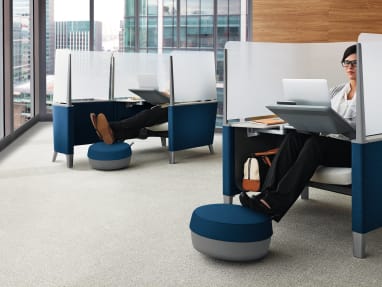 Open image tooltip
Open image tooltip
Cognitive
Think Better
The workplace should support the need for focus and rejuvenation through workspaces where individuals and teams can think clearly, concentrate easily, solve problems and generate new ideas.
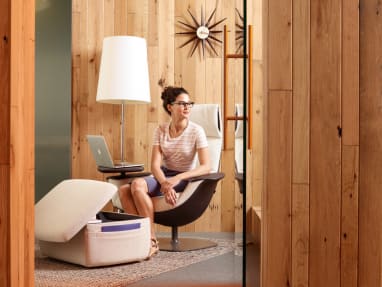 Open image tooltip
Open image tooltip
Emotional
Feel Better
Organizations should support the social nature of work by creating workspaces that nurture a sense of belonging and foster connections between people and the organization.
Ecosystem of Spaces
Ecosystem of Spaces
Ecosystem Overview
An ecosystem of spaces enables an organization to be more resilient. It uses real estate more efficiently and cost effectively, making it easier for organizations to experiment with different types of spaces and evolve the workplace over time.
A workplace ecosystem supports employee wellbeing by providing individuals and groups with a range of options within the workplace that consider the following:
Posture
The workplace should encourage regular movement throughout the day and offer options for people to work in sitting, standing or lounge postures.
Presence
Spaces should enable quality interactions with teams that are both local and distributed across continents and time zones, supporting both digital and analog communication.
Read Making Distance Disappear
Privacy
The work environment should provide places that offer varying ways to achieve privacy, in both open and enclosed spaces. Privacy is important to all workers and a vital component of both focus and rejuvenation, which are essential to employee engagement.
Designing the Resilient Workplace
Overview
Overview
Five Spatial Zones
When creating a Resilient Workplace, consider the intentional combination of five spatial typologies (zones), designed to accommodate and anticipate changing organizational and employee needs.
The size, ratio and adjacency of each zone should be tailored to match both your business objectives and cultural expectations. The result is an agile workplace that supports change, rather than resists it.
Resident Zone
Resident Zone
Assigned spaces for workers to complete everyday tasks. A space to support both individual focused and collaborative work. Owned amenities like personal storage and uniquely chosen worktools allow workers to personalize their space.
Meeting Zone
Meeting Zone
A variety of settings to support different forms of collaboration. This zone offers a wide range of connective technologies to support communication and collaboration of teams both physical and distributed
Nomadic Zone
Nomadic Zone
A welcoming destination for mobile workers to connect with others or find an appropriate space for focus. The Nomadic Zone fosters a range of interactions from short-term to long term with quick and easy access to data and power.
Social Zone
Social Zone
A comfortable area to socialize, rejuvenate, informally collaborate, focus and seek nourishment. Design considerations can be tailored to a specific team or department’s culture.
Resource Zone
Resource Zone
A convenient central location that offers worktools and shared materials, as well as an option for personalized assistance and facilitated services.
Proven Spaces
Overview
At Steelcase, our own workplaces serve as living labs for our design ideas. We research, develop, refine and evolve our insights on ourselves prior to bringing them to market. These insights help reduce your risk, as you create your own combination of spaces using our design ideas.
Two of our living labs are the Steelcase WorkCafé and our Innovation Center.
Explore our design ideas and tools, and discover what makes each of these proven spaces work and how you can customize your own combination of spaces.
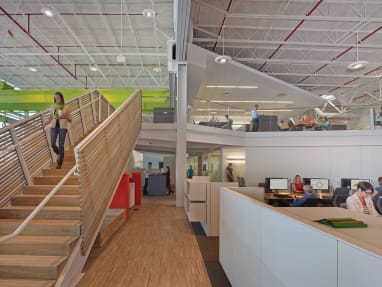 Open image tooltip
Open image tooltip
Innovation Center
Innovation drives advancement. That’s always been true – throughout history, in every enterprise and in every part of the world.
An Innovation Center is a solution for organizations that supports collaborators with the range of settings to support the switch between individual and group behaviors. It is a space that communicates a culture of innovation to the employees it houses.
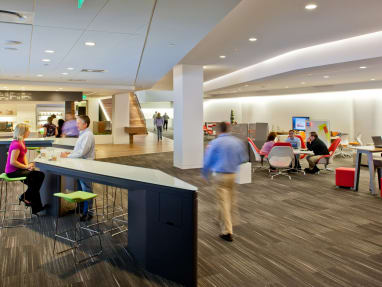 Open image tooltip
Open image tooltip
WorkCafé
Business tasks today are more varied and more challenging. Workers are increasingly mobile and distributed. They often leave the office for a coffee shop or other third place, which separates them from coworkers, organizational resources and culture.
A WorkCafé is a dynamic space that connects people with colleagues, their work, and their organization. It transforms traditional corporate cafeteria real estate into destinations for connection, collaboration, focus and innovation.

